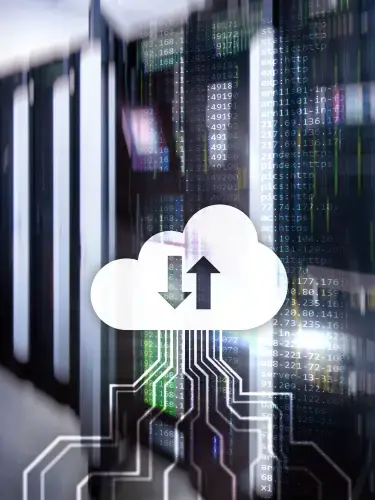Our Guide to Your best Way to run Your Learning Management System
In today's rapidly evolving technological landscape, the implementation of a Learning Management System (LMS) has become more flexible and diverse than ever before. Thanks to various technical developments, organizations now have several options for running an LMS. These different approaches cater to the unique needs, resources, and objectives of each organization, allowing them to choose the method that aligns most closely with their goals.
Key ways to run an LMS

-
Self-Hosted LMS:
In a self-hosted LMS, the organization sets up and maintains the LMS software on its own servers and infrastructure. This option grants maximum control over customization and data security but demands IT expertise and infrastructure investment. -
Cloud-Based LMS:
A cloud-based LMS is hosted and managed by a third-party provider, accessible via the internet. This offers scalability, ease of access, and reduced IT maintenance, but organizations relinquish some control and may incur ongoing subscription costs. -
Hybrid LMS:
A hybrid LMS combines elements of both self-hosted and cloud-based systems, allowing for flexibility and customization. Organizations can host sensitive data in-house while leveraging the scalability and convenience of cloud services, offering a balance between control and ease of use. -
Vendor-Hosted LMS:
Organizations can opt for a vendor-hosted LMS, where the LMS provider manages hosting, updates, and maintenance. This minimizes IT responsibilities but may limit customization and could result in ongoing licensing fees.
In conclusion, the choice of LMS implementation should align with an organization's specific needs, resources, and technical capabilities. Each approach has its advantages and challenges, and selecting the right one is crucial to achieving effective training and development initiatives.
Relevant Questions for LMS Installations
When implementing a Learning Management System (LMS), IT departments or responsible system administrators need to address various important questions. These questions are relevant in different ways depending on whether the LMS is installed in the organization's own server infrastructure or in an external data center.
We have compiled some of the questions that should be considered in both scenarios for you:
LMS in Your Own Server Landscape:
-
Hardware Requirements: What hardware resources are required to efficiently run the LMS on internal servers? (e.g., CPU, RAM, storage space)
Example: In an internal server environment, the LMS may require at least 4 GB of RAM and a quad-core processor for smooth performance. -
Software Requirements: What software dependencies and operating systems are needed to operate the LMS on internal servers?
Example: The LMS may require specific libraries or a particular operating system like Linux. -
Network Requirements: Are there specific network features or configurations required to run the LMS in your own server infrastructure?
Example: The LMS may require a specific network configuration to optimize communication between servers and clients. -
Security: What security measures are necessary to protect the LMS and control access?
Example: To ensure the security of the LMS, various measures can be taken, such as implementing firewalls, conducting regular security audits, encrypting user data, and setting up access controls. These measures aim to prevent unauthorized access and protect data integrity. -
Backup Strategy: How are regular backups of the LMS and its data created, managed, and restored?
Example: The backup strategy may involve creating a full backup of the LMS and its data every day at midnight. These backups are stored on a separate, physically isolated server and can be used for restoration when needed. Backup intervals and retention periods should align with business requirements. -
Scalability: Can the LMS be easily scaled to accommodate increasing demands?
Example: If the number of users in the LMS grows significantly, scalability might involve adding additional server resources to handle the increased load without compromising performance. This can be achieved through the use of virtualization technologies or cloud resources. -
Integration: What existing systems (e.g., LDAP, Active Directory) need to be integrated with the LMS?
Example: The LMS can be integrated with the existing LDAP directory service to centralize user authentication and management. This integration allows users to log in with their existing credentials and simplifies user account management. -
User and Access Management: How are user accounts managed, and how are permissions assigned?
Example: Administrators can create, delete, and edit user accounts and manage permissions for user groups. For example, the "Trainer" group may have permission to create and edit courses, while the "Student" group can only access learning content. -
User Support: How is support for user inquiries and technical issues organized?
Example: A support hotline or a helpdesk ticketing system is established to assist users with issues or questions. A knowledge database with frequently asked questions (FAQs) and solutions is also created to provide users with self-help options and reduce the workload of the support team.
Your LMS in an External Data Center:
-
Provider Selection: Which LMS provider or hosting service will you choose for the external data center?
Example: Choosing an established data center like "AWS cloud" for the hosting service. -
Contracts and SLAs: What service level agreements (SLAs) and contracts need to be established with the provider?
Example: An SLA might include a 99.9% availability guarantee and a 4-hour response time for support requests. -
Data Migration: How will the migration of existing LMS data into the external environment be conducted?
Example: Existing learning content and user profiles need to be seamlessly transferred to the new LMS. -
Data Security: How will you ensure the security of LMS data in an external data center?
Example: Choosing a data center with robust physical security measures, such as biometric access controls and surveillance cameras, to protect sensitive data. -
Scalability and Resources: How flexible is the external service provider in adjusting resources and capacities to meet requirements?
Example: Scaling up server resources quickly during peak usage periods, such as high-demand training seasons, to ensure optimal performance. -
Data Access and Management: How can you access and manage data in the external data center?
Example: Implementing a secure VPN or other remote access methods for administrators to manage the LMS hosted externally -
Disaster Recovery: What measures are taken to restore LMS functionality in case of a provider outage or other emergencies?
Example: Establishing a failover mechanism to switch to a backup data center in case the primary data center experiences a major outage. -
Costs: What are the costs associated with using an external data center, and how are they managed?
Example: Monitoring monthly hosting fees, data transfer costs, and any additional charges to ensure cost-effectiveness and budget compliance. -
Compliance: What compliance requirements must be considered when using an external service provider?
Example: Verifying that the data center provider complies with industry-specific certifications like ISO 27001 for information security or SOC 2 for data center controls, as required by regulatory standards.
Answering these questions should help IT departments and system administrators make the right decisions when planning and implementing an LMS, whether it's hosted internally or externally.
Ask your IT-specialists for their current IT-guidelines, which will also give you definite information to help you with your decision.
Pros & Cons
|
on-Premise / onSite |
Hosting in an External Data Center |
|
|---|---|---|
|
Initial Costs |
High initial investments in hardware and infrastructure |
Lower initial capital expenses, but ongoing costs |
|
Maintenance and Operation |
Responsibility for maintenance, updates, and operation |
Less direct control over maintenance and operation, dependent on SLAs |
|
Redundancy and Reliability |
Reliance on your own measures for redundancy and reliability |
Relying on the hosting provider for reliability |
|
Compliance |
Full control over compliance with standards |
Dependency on the hosting provider's compliance |
|
IT Personnel |
Requires qualified IT personnel for maintenance and operation |
Reduced need for in-house IT personnel but reliance on provider expertise |
|
Cost Control |
High control over costs and resources |
Reduced capital expenses as no hardware procurement is required |
|
Data Control |
Full control over your data |
Trust in the security and availability of the hosting provider's data centers |
|
Customizability |
Maximum customization for specific requirements |
Limited customizability of system environment, dependent on the services offered by the hosting provider |
|
Scalability |
Scalability as needed and control over capacity |
Scalability dependent on the offerings of the hosting provider |
Conclusio
In a nutshell: what option works best for you?
On-Premise / on-Site is suitable for organizations with high customization requirements, budgets, and internal resources.
Hosting in an external data center is ideal for organizations that prioritize scalability, lower initial costs, and can trust a provider's expertise.

About us
Since 1998 SoftDeCC is working closely with major training centers and academies. This results in a unique experience with training requirements.
Our Learning Management System is designed to adjust to individual corporate learning processes and address evolving challenges. More...

Free Consultancy Appointment
Call +49 (0)89 / 3090 839 - 30 for our free consulting service.





